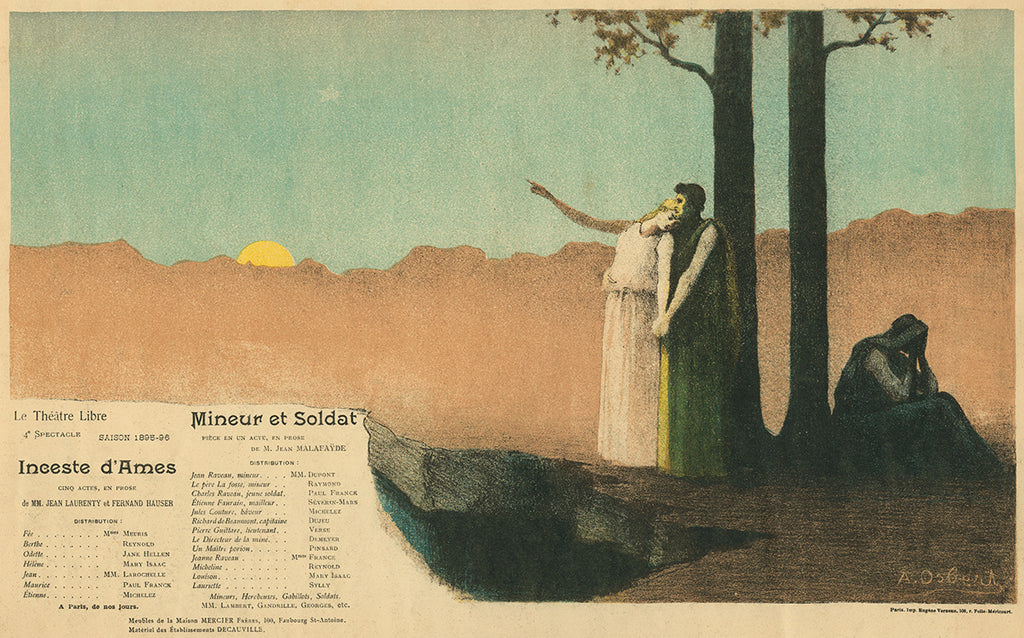 Sold
Sold
Inceste d’Ames and Mineur et Soldat
OSBERT, Alphonse
Color lithograph on smooth wove paper, 1896.Refs: Aitken & Josephowitz 33; Boyer 53 (plate 31).Theater program. Very scarce.Used for a play at...
View full detailsBorn into a well-to-do bourgeois family, Alphonse Osbert (1857-1939) entered the École des Beaux-Arts de Paris where he mostly studies with Henri Lehmann. It is there that he met fellow students Georges Seurat and Edmond Aman-Jean. Thrust into the art world he initially remained wedded to more traditional painting styles being further taught by Léon Bonnat and Fernand Cormon. Osbert’s first Salons paintings were of a naturalistic style. The turn that his contemporaries take, like Seurat, does not initially seem to interest him. But while studying the painting of light effects in the forest of Fontainebleau, Osbert fairly suddenly did change his style in the 1880s and find his own voice. With the encounters of Maurice Denis and Puvis de Chavannes, the scale of his painting became more monumental. As his style evolves towards Symbolism, he participates in the Salon de la Rose-Croix and becomes close to the symbolist poet Stéphane Mallarmé. With his artistic personality affirming itself, fame follows and Osbert would remain an in-demand painter, including for large-scale and public commissions for most of his life. Osbert was not much of a printmaker. One color lithograph is attributed to him, and a few very fine interpretative color aquatints after some of his most famous compositions were commissioned of others. The Musée d’Orsay holds hundreds of his works.
 Sold
Sold
Color lithograph on smooth wove paper, 1896.Refs: Aitken & Josephowitz 33; Boyer 53 (plate 31).Theater program. Very scarce.Used for a play at...
View full detailsPlease sign up for our newsletter
Email: info@armstrongfineart.com
Phone: 773-887-6776
1200 West 35th Street, #186
Chicago, IL 60609
Copyright © 2026 Armstrong Fine Art.
Development by Alo Agency. Powered by Shopify
